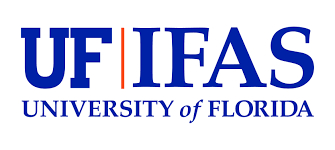 {width=10%} Genomic-wide association study (GWAS)
{width=10%} Genomic-wide association study (GWAS)
```{=html}``` ## Introduction This is an script developed using a population simulated in AlphaSimR package [@gaynor2021alphasimr]. One trait with high heritability and controlled by a few QTLs was simulated into two breeding populations. In addition, four GWAS models were implemented and an extension with models in GAPIT [@wang2021gapit] is presented, as follows: **Model 1.** Non Adjusted markers **Model 2.** Adjusted by Q **Model 3.** Adjusted by K **Model 4.** Adjusted by K+Q **Models with GAPIT** Extra implementations ## Loading the packages for the simulation/GWAS ```{r eval=TRUE} rm(list=ls()) library(AlphaSimR) library(rrBLUP) #For K and Q+K GWAS library(qqman) #For Manhattan and Q-Q plots library(ggfortify) #install.packages("remotes") #remotes::install_github("jiabowang/GAPIT3") library(GAPIT) ``` ## Creating the population for the GWAS ### 1. Creating the base genome ```{r eval=TRUE} # Global parameters nQtlPerChr = 4 #Per pair of chromosome nSnpPerChr = 500 # must be > nQtlPerChr # Simulate mapping population set.seed(18556255) FOUNDERPOP = runMacs(nInd=1000, nChr=10, segSites=nSnpPerChr, split=20) # Simulate the trait of interest SP = SimParam$ new(FOUNDERPOP)$ restrSegSites(minSnpPerChr=nSnpPerChr, minQtlPerChr=nSnpPerChr, overlap=TRUE)$ addTraitA(nQtlPerChr,gamma=TRUE)$ addSnpChip(nSnpPerChr)$ setVarE(H2=0.8) # Trait heritability pop = newPop(FOUNDERPOP) ``` ### 2. Creating a population structure In a way to create a population structure, we implemented two steps. The first was to split the base genome into two. We used above (`runMacs` function) the argument `split=20`, which splits the base genome in two, 20 generations ago. The second, is going to be the cycles of selections where each population go through (below). As we did split the base genome before, we will create two populations (popA and popB), where the popA takes the individuals from 1:500, and the second from 501:1000 out of 1000 individuals from the base genome. Then, the first population (popA) go through 6 cycles of selections and the second population (popB) face 4 cycles of selection. As they initially differ, after the different number of cycles of selection, it is likely that the allele frequency of the two populations would be different. ```{r eval=TRUE} #Create 2 sub populations popA = pop[1:500] popB = pop[501:1000] #Cycles of selection for(i in 1:6){ popA = selectCross(popA, nInd=10, nCrosses=50, nProgeny=10) if(i<4){ popB = selectCross(popB, nInd=10, nCrosses=50, nProgeny=10) } } #Combining both pops pop = c(popA,popB) ``` ## PCA and population genotypes In this step we will extract the SNPs from the core population and we will create a PCA to explore the structure in the data. ```{r eval=TRUE} # Format genotypes for rrBLUP rawGeno = pullSnpGeno(pop) freq = colMeans(rawGeno)/2 MAF = apply(cbind(freq,1-freq),1,min) # Ploting PCA pca_res <- prcomp(rawGeno) autoplot(pca_res) ``` ## Organizing the data for the GWAS For the GWAS analysis, we going to organize the data. We will need dosage matrix (coded -1,0,1), phenotypes values for the trait of interest, and the QTL positions. ```{r eval=TRUE} # Genotypes/SNP matrix/dosage matrix rawGeno = rawGeno-1 geno = as.data.frame(t(rawGeno)) geno = data.frame(snp=row.names(geno), chr=rep(1:10,each=nSnpPerChr), pos=rep(1:nSnpPerChr,10), geno) # Create "pheno" data.frames for rrBLUP pheno = data.frame(gid=names(geno)[-(1:3)], trait1=pop@pheno[,1]) # Tracking the information of population phenoQ = data.frame(gid=pheno$gid, subPop=factor(rep(c("a","b"),each=500)), trait1=pheno$trait1) # Find QTL locations within SNP chip and chromosome position qtl = paste0(rep(1:10, each = 10), '_',SP$traits[[1]]@lociLoc) ``` ## Model 1 - GWAS with no adjustament Single marker regression $$y = S\alpha + e$$ ```{r eval=TRUE} # No adjustments---- model0 = data.frame(snp=geno$snp, chr=geno$chr, pos=geno$pos, trait1=rep(NA_real_,10*nSnpPerChr)) for(i in 1:(10*nSnpPerChr)){ if(MAF[i]>=0.05){ #Fit linear model with lm() and extract p-value mod1 = summary(lm(pheno$trait1~rawGeno[,i])) tmp = mod1[[4]][2,4] #Check for markers confounded with structure if(is.na(tmp)){ model0$trait1[i] = 1 }else{ model0$trait1[i] = tmp } }else{ model0$trait1[i] = 1 } } #Account for p-value=0 model0$trait1[model0$trait1==0] = 1e-300 ``` ## Model 2 - GWAS correcting with population structure (Q) Single marker regression with population as fixed effect $$y = X\beta + S\alpha + e$$ ```{r eval=TRUE} #Adjust for population structure (Q)---- modelQ = model0 for(i in 1:(10*nSnpPerChr)){ if(MAF[i]>=0.05){ #Fit linear model with lm() and extract p-value mod2 = summary(lm(pheno$trait1~phenoQ$subPop+rawGeno[,i]))[[4]] if(dim(mod2)[1] == 2){ tmp = NA }else{ tmp = mod2[3,4] } #Check for markers confounded with structure if(is.na(tmp)){ modelQ$trait1[i] = 1 }else{ modelQ$trait1[i] = tmp } }else{ modelQ$trait1[i] = 1 } } #Account for p-value=0 modelQ$trait1[modelQ$trait1==0] = 1e-300 ``` ## Model 3 - GWAS correcting with Kinship matrix (K) Single marker regression with covariance information among the individuals. The matrix will be calculated internally by the function 'A.mat`. $$y = S\alpha + Qv + e $$ ```{r eval=TRUE} #Adjust for kinship (K)---- modelK = GWAS(pheno,geno,plot=FALSE) modelK$trait1 = 10^(-modelK$trait1) #Revert to p-value ``` ## Model 4 - GWAS correcting with both, Q and K $$y = X\beta + S\alpha + Qv + e $$ ```{r eval=TRUE} #Adjust for both structure and kinship (Q+K)---- modelQK = GWAS(phenoQ,geno,fixed="subPop",plot=FALSE) modelQK$trait1 = 10^(-modelQK$trait1) #Revert to p-value ``` ## Manhattan plot ```{r eval=TRUE} # Assuming Bonferroni Threshold (0.05/m) hline = -log10(0.05/ncol(rawGeno)) # Manhattan plots op = par(mfrow=c(2,2),mai=c(.9,.9,0.9,0.9), mar=c(2.5,2.5,1,1)+0.1, mgp = c(1.5,0.5,0)) manhattan(model0,chr="chr",bp="pos",p="trait1",snp="snp", highlight=qtl, main="Unadjusted", col = c("blue4", "orange3"), suggestiveline = FALSE, genomewideline = hline) manhattan(modelQ,chr="chr",bp="pos",p="trait1",snp="snp",highlight=qtl, main="Adjusted for Q", col = c("blue4", "orange3"), suggestiveline = FALSE, genomewideline = hline) manhattan(modelK,chr="chr",bp="pos",p="trait1",snp="snp",highlight=qtl, main="Adjusted for K", col = c("blue4", "orange3"), suggestiveline = FALSE, genomewideline = hline) manhattan(modelQK,chr="chr",bp="pos",p="trait1",snp="snp",highlight=qtl, main="Adjusted for Q+K", col = c("blue4", "orange3"), suggestiveline = FALSE, genomewideline = hline) ``` ## QQ-plot ```{r eval=TRUE} #Q-Q plots op = par(mfrow=c(2,2),mai=c(.9,.9,0.9,0.9), mar=c(2.5,2.5,1,1)+0.1, mgp = c(1.5,0.5,0)) qq(model0$trait1,main="Unadjusted", col = "blue4") qq(modelQ$trait1,main="Adjusted for Q", col = "blue4") qq(modelK$trait1,main="Adjusted for K", col = "blue4") qq(modelQK$trait1,main="Adjusted for Q+K", col = "blue4") ``` ## Extra Models with GAPIT ```{r, eval = FALSE} # Create "pheno" data.frames for rrBLUP myYp = data.frame(gid=pop@id, trait1=pop@pheno[,1]) # Geno rawGeno = pullSnpGeno(pop) Markers = data.frame(myYp["gid"],rawGeno) rownames(Markers) = NULL # markers position Map.pos = data.frame(snp=colnames(Markers[,-1]), chr=rep(1:10,each=nSnpPerChr), pos=rep(1:nSnpPerChr,10)) # Model MLMM mod1=GAPIT(Y=myYp, #fist column is ID GD=Markers, GM=Map.pos, PCA.total=2, model="MLMM", # MLMM Geno.View.output = FALSE, PCA.View.output=FALSE) # Model FarmCPU mod2=GAPIT(Y=myYp, #fist column is ID GD=Markers, GM=Map.pos, PCA.total=2, model="FarmCPU", # MLMM Geno.View.output = FALSE, PCA.View.output=FALSE) # Model MLM mod3=GAPIT(Y=myYp, #fist column is ID GD=Markers, GM=Map.pos, PCA.total=2, model="MLM", # MLMM Geno.View.output = FALSE, PCA.View.output=FALSE) ``` ## References ::: {#refs} ::: {width=10%} Genomic-wide association study (GWAS)
{width=10%} Genomic-wide association study (GWAS)